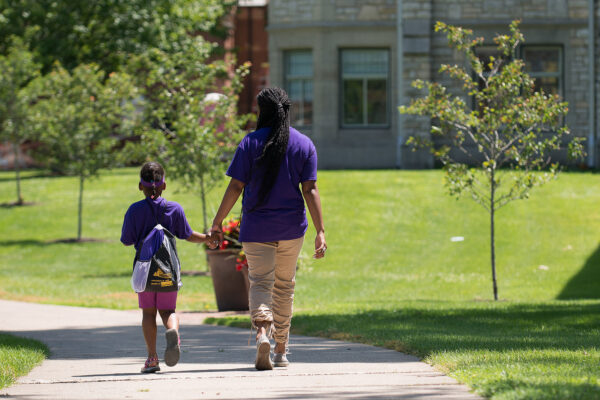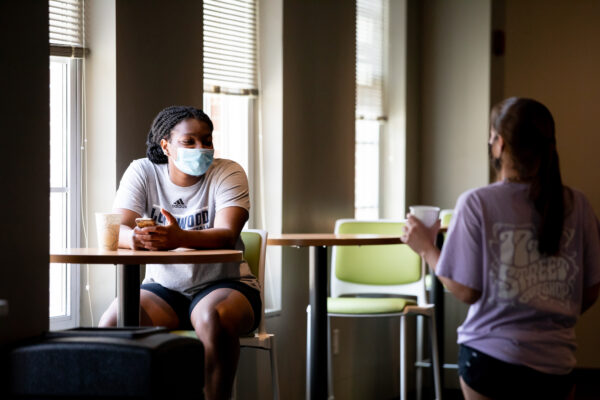As we gear up for the 2018 fall semester, Ellen Bara Stolzenberg of the Higher Education Research Institute looks at how the health concerns of freshman college students have changed in recent decades.
This post is the latest in a series on college student mental health and well-being.
Sleep deprivation. Hormones. Anxiety and depression. Lack of control and autonomy. Concern over fitting in vs. developing an identity, worries over future job security. Anxiety about the current political climate. The stress that comes from the 24/7 media.
And this is all before college students even arrive on campus as freshmen.
Recent articles in Psychology Today, Time, Huffington Post, and the Association of American Colleges & Universities among others have highlighted the importance of student well-being related to student involvement and success, student services, and other areas. But while the media increasingly has focused on well-being, college student mental and physical health has long been a focus of the work of the Higher Education Research Institute (HERI).
The Cooperative Institutional Research Program (CIRP), now based at HERI at University of California-Los Angeles, has administered The Freshman Survey (TFS) since 1966. Created by Alexander Astin, more than 15 million incoming freshmen at nearly 1,900 colleges and universities have completed the TFS over the years, making it the largest consistently running study of higher education in the United States.
Questions on behaviors like exercising, drinking, and smoking have been included since the survey was first launched. In 1985, new items on student perceptions of their physical and emotional health were added, in addition to related questions about how often students felt depressed or overwhelmed during their last year in high school.
Capturing information on students as they enter college can provide practitioners and policymakers with data on important characteristics that can impact the student experience. For example, healthy students are more likely to do well in school, and their more frequent participation in physical activities can reduce anxiety, stress, and depression (Randall, 2014). The results of this survey can help us examine the complex intersections of college student identity, perception, and behavior.
Students report a decline in physical health over 20 years of the survey
In the trends monograph commemorating the 50th administration of the CIRP Freshman Survey, we discuss that students’ ratings of their physical health have declined since the question was first asked in 1985. This decline over time highlights the importance of the availability and accessibility of student services, such as counseling, crisis hotlines, and medical facilities. It is also points to the need to train staff and faculty on how students entering college today may be different than previous generations.
Almost two-thirds of students (63.9 percent) reported above average (rating “above average” or in the “highest 10 percent ”) physical health in 1985 compared to just over half (55.2 percent) in 2015. Physical health ratings declined for both men and women during this time. However, men consistently rated their physical health higher as compared to their peers than women did. In 1985, almost three-quarters (74.4 percent) of men rated themselves as above average in physical health before falling to 66.0 percent by 2015, while 53.9 percent of women rated their physical health as above average in 1985 compared to just 46.3 percent in 2015.
Further analysis revealed differences by race and ethnicity as well. Student service professionals and higher education administrators must be aware that students’ emotional and physical well-being can vary by a number of characteristics, including past behaviors and aspects of identity. And it is vital that they are prepared to work with students from all backgrounds.
- In 1985, Native American students were least likely to rate their physical health as above average (52.4 percent).
- White students (64.7 percent), black students (61.0 percent), and those who marked Other race (61.0 percent) were most likely indicate their physical health above average.
- Asian and Latino/a students showed the greatest decline in self-rated physical health from 1985 to 2015, dropping 13.1 and 15.4 percentage points, respectively.
- Asian and Latino/a students reported the lowest self-rated physical health in 2015 with 43.8 percent of Latino/a students and 45.8 percent of Asian students rating their physical health as at least above average relative to their peers.
When looking at the intersection of race and sex, a slightly different picture emerges.
- On the high end, black and white men were most likely to rate their physical health at least above average in both 1985 and 2015.
- Native American men in 1985 and Asian men in 2015 were least likely to rate their physical health at least above average.
- For female students, white and those who selected “Other” race were most likely to rate their physical health at least above average both in 1985 and 2015.
- Native American female students were least likely to do so in 1985 while Latina students were least likely to do so in 2015.
- Asian women showed the greatest decline (11.6 percentage points) over the three decades.
Newly collected data on other aspects of identity, such as sexual orientation, gender identity, and former foster care status also show significant differences, demonstrating the need for collecting data on multiple, intersecting aspects of identity.
While the perception of physical health has declined, smoking and drinking rates have improved
The proportion of incoming freshmen who “frequently” smoked declined substantially between the first TFS administration in 1966 and the 50th in 2015, making the reported decline in physical health somewhat curious. One of the reasons for the self-reported decline in physical health may be the influence of social media and the constant comparing of one’s self to another, which can lead to decreases in self-esteem and self-image rather than actual decline in physical health.
- In 1985, 8.8 percent of students reported smoking “frequently” compared to only 1.4 percent in 2015.
- Women (11.1 percent) were more likely to frequently smoke than men (6.4 percent) in 1985, but in 2015, the percentages were about equal (1.6 percent and 1.2 percent, respectively).
- Native American students were more likely to smoke frequently than other race groups in both 1985 and 2015.
- In 1985, black male students and Asian female students (3.1 percent each) were least likely to smoke frequently during the previous year.
- In 2015, Latino men and black women were least likely to smoke frequently (0.6 percent and 0.4 percent, respectively).
Regarding alcohol use, two-thirds (66.5 percent) of first-time, full-time students entering college in 1985 “frequently” or “occasionally” drank beer in the previous year. This dropped to less than one-third of students who started college in 2015 (30.3 percent). While the proportion decreased dramatically, white men were most likely to drink beer in both 1985 (74.6 percent) and 2015 (42.6 percent). Black women were least likely to drink beer in both 1985 (23.6 percent at least occasionally) and 2015 (down to 8.6 percent).
Students also report lower emotional health in recent years
Similar to their self-rated physical health, students’ emotional health has declined since the question was first asked in 1985.
Women’s self-rated emotional health has been consistently lower than their male peers. These results are not surprising, as women have higher rates of depression, anxiety, and sleep problems. In 1985, 63.6 percent of all incoming students rated their emotional health as above average or in the top 10 percent compared to the average person their age. This figure decreased to 47.4 percent in 2017. Women’s emotional health started lower in 1985 (59.3 percent, compared to 68.1 percent of men) and dropped more sharply through the three plus decades to 40.5 in 2017, widening the gender gap compared to 56.1 percent of men.
At the intersection of race and sex, we see that even though they are most likely to report above average emotional health, black men showed the greatest decline (13.4 percentage points) among males. White and multiracial women (16.2 and 18.8 percentage-point decrease, respectively) showed the greatest decline, though Native American women were still least likely to report above average emotional health self-ratings at both time points (45.1 percent and 31.4 percent, respectively).
A few additional points to consider:
- Black students were most likely to rate their emotional health as above average or in the highest 10 percent relative to their peers (64.6 percent in 1985 and 50.9 percent in 2017).
- Native American students were least likely to rate their emotional health at least above average in both 1985 and 2017 (52.5 percent and 42.3 percent, respectively).
- Latino/a students and white students showed the greatest decline between the two time points (14.4 and 16.5 percentage-point decline, respectively).
To address these disparities, colleges and universities should consider implementing campus climate assessments to determine which campus populations may need more support or services in order to see an increase in emotional health.
Since the question was added in 1985, women have consistently reported feeling overwhelmed by all they had to do more frequently than men during their last year in high school, but the gap has widened over time. With this knowledge, student life professionals can target women with workshops and support groups to give students skills and strategies directed at empowerment, self-worth, and resilience.
- In 1985, 13.4 percent of men and 22.6 percent of women were frequently overwhelmed in high school, a gap of just over 9 percentage points.
- The gap tripled in 2017 to nearly 28 percentage points with under a quarter of incoming male students (23.2 percent) and more than half of incoming female students (51.0 percent) frequently feeling overwhelmed by all they had to do in the previous year.
- In 1985, Latinas were least likely to frequently feel overwhelmed (14.7 percent) among their female peers. However in 2017, they were most likely to frequently feel overwhelmed (54.8 percent), an increase of 40 percentage points.
Students aren’t blank slates when they arrive on our campuses. Their lives before college are relevant to how well they adjust and thrive. It is important for institutions to capture data when students first come to campus so they can improve student services and support, and ultimately, student success.
If you have any questions or comments about this blog post, please contact us.


